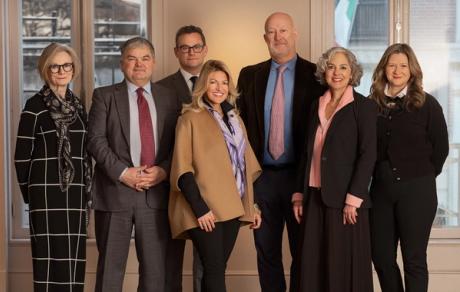
After a soft 2023 for the world’s largest auction houses, this year opened with news of a significant merger in the sector’s upper-middle tier. Philadelphia-based Freeman’s, the oldest auction house in the US, and Chicago-headquartered Hindman announced on 9 January that they would unite to form Freeman’s Hindman, a new auction house with growing ambitions.The combined company counts six salerooms and 18 regional offices across the US in what a press statement calls “the largest coast-to-coast presence of any auction house” in the nation. The new company will offer a full suite of services that includes auctions, appraisals, private sales, art advisory and others across a broad range of categories, from fine and decorative art to jewellery, furniture, rare books and luxury collectibles.The fit between the two houses was almost ideal, says Alyssa D. Quinlan, who became the chief executive of the merged company one year after taking the same role at Hindman. Freeman’s, she tells The Art Newspaper, “really connects with [Hindman’s] culture” while also complementing its sale categories and strategic orientation, particularly through Freeman’s focus on single-owner sales.Alasdair Nichol, formerly the chairman of Freeman’s and now the co-deputy chair of Freeman’s Hindman, adds: “[Hindman] did rather better in post-war and contemporary than we did, but we were stronger in American art. They’ve done very well with trusts and estates; we’ve had several private treaty sales in the millions.”[Hindman] had more business coming out of the New York market—without having anyone based there—than in any of our regional offices Alyssa D. Quinlan, chief executive Freeman’s HindmanShortly after the merger announcement, Freeman’s Hindman debuted a permanent saleroom on Manhattan’s Upper East Side. Around three to four years ago, Quinlan says, Hindman’s data showed “we had more business coming out of the New York market—without having anyone based there—than in any of our regional offices”. The figures convinced house leadership to found an office in the Empire City in November 2022; the long-term upgrade positions Freeman’s Hindman to capitalise further.International expansion is already being discussed, too. One key player here will be Lyon & Turnbull, the Edinburgh-headquartered auction house with which Freeman’s has maintained a strategic alliance that Nichol calls “closer than most”. Over the years, the US and Scottish houses staged joint sales in London, Hong Kong and elsewhere, as well as facilitating several key consignments for each other. (The president of Freeman’s Hindman, Paul Roberts, also serves as the vice chair of Lyon & Turnbull.)Middle market mechanicsAlthough the merger continues the trend towards consolidation in the art business, it also signals the vital distinctions between how different tiers of the auction sector function.“The middle market is different from the high end in that there’s so much more supply,” Quinlan says, giving smaller auction houses greater ability to meet sustained demand. This allowed Hindman to post its second strongest annual results ever in 2023, only slightly behind its all-time high in 2022. The merger also means Freeman’s Hindman will control a larger share of this more stable tier of the auction business than either house alone.Freeman’s Hindman will stay rigorously focused on the upper-middle market, which Nichol defines as objects sold for between $5,000 and $5m. In particular, the goal is to step away from high-volume, lower-value sales towards offering fewer objects at higher prices—a path to both larger returns and cost savings on photography, condition reporting and cataloguing.Freeman’s pre-merger business has been a proof of concept for this approach over the past 25 years. Nichol says that when he started at the auction house in 1999, it was selling around 50,000 lots per year for an annual turnover of $4m to $5m. Within three years, Freeman’s generated about the same turnover from the roughly 200 lots in one auction. And in February 2021, the house sold a single painting, the Vienna Secession co-founder Carl Moll’s Weißes Interieur (white interior) (1905), for $4.75m.Although the new company will undoubtedly need to continue evolving in response to the market, Nichol shares the confidence of his fellow executives: “Freeman’s has been around for 219 years. We’ve been through the Great Depression, two world wars, a pandemic. That’s because we adapt. Freeman’s Hindman will do the same thing.”


























